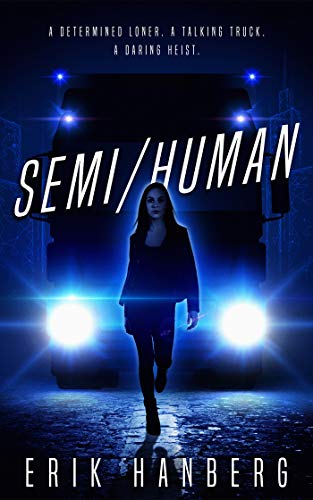
While I seldom read biography, when I do, I usually really enjoy it. Marine One: Four U.S. Presidents, One Proud Marine, and the World’s Most Amazing Helicopter is a really good read. The author, a retired Marine, knows his subject matter, of course, but the book’s organization, which is both linear yet focused, helps make it an engaging read.
After an opening which describes the “victory lap” circling Washington on Inauguration Day, which is a taste of one of the final “missions” that the author participated in, the usual chronological approach takes the reader back to the time when the author’s love of flying helped him choose a career path. Lacking the funds to pursue a private education in aviation, Ray L’Heureux (call sign “Frenchy”) decides to join the Marine Corps as a pilot. During his very successful training, he decides to fly helicopters rather than jet aircraft, which most of his fellow Marines sought as their specialty. While on duty in California, Frenchy is in the audience gathered to see President Reagan land at his base. As he is impressed with this unit, Frenchy decided that he wanted a tour of duty with HMX-1, which is the name of the part of the Marine Corps which provides helicopter transportation for the President.
L’Heureux actually served in HMX-1 twice during his thirty year career in the Marines, hence the “Four Presidents” in the sub-title. He was a junior officer during the Bush 41 and Clinton administrations, meaning that he was part of the group that planned the helicopter trips (called “lifts”) and occasionally flew as co-pilot for dignitaries. L’Heureux returned as commander of HMX-1 during the presidency of George W. Bush, with whom Frenchy became friends. When Bush 44’s term was over, the author was still the commander of HMX-1, thus he flew the Obamas for a few months before his assignment ended and the reins of HMX-1 went to another Marine pilot.
While not overly technical, L’Heureux lets the reader know quite a lot about how helicopters work. The focus of the book is on HMX-1 and their two sorts of helicopters, all painted dark green with white on the top, but the author also flew in other types of helicopters with other missions, and that’s of interest. However, the “inside” view is largely about how the military goes to great lengths to insure both the safety, comfort, and efficiency in providing transportation for the President, the Vice President, and heads of state of visiting nations. Whether the reader knows much about helicopters, the military, or just recent history, or not, there’s something for everyone in Frenchy’s book. According to the author, President Eisenhower was the first U.S. President to use helicopters for day to day transportation, as it was faster and far more convenient for everyone. Motorcades require a number of security measures, which, of course, takes time and impacts traffic. When the President boards one of the “white top” helicopters, he can be where he needs to be more quickly, and traffic is unimpeded. So, since Eisenhower, most Presidents have relied upon Marine One for quite a lot of their transportation, whether going to Andrews to board Air Force One, or just a short trip to the Presidential retreat, Camp David.
One of the aspects that I found quite interesting were the stories about Camp David, which is a 45 minute ride from the White House via helicopter. The author describes playing “Wallyball” with Bush 41. Later, L’Heureux, both an athletic guy and a Marine, was invited to ride mountain bikes with Bush 44, and that experience began their friendship. During his time of flying George W. Bush, the author was frequently at the ranch in Crawford, Texas, and helped build a bike trail on the ranch.
Another interesting aspect of the book is that when the U.S. President travels abroad, the helicopters go over first, so that the President is always flown by Marine pilots. The effort necessary to dismantle, load, unload, and reassemble and then test the helicopters before the arrival of the President is a bit mind boggling. In his memoir, L’Heureux describes flying Marine One over Normandy for D-Day anniversaries, landing in Germany so the President could meet with Angela Merkle, and even landing at Windsor Castle, so the President could have tea with Queen Elizabeth.
For readers who enjoy history, insider information, or just an entertaining read, do check out Inside Marine One.



 I like for the price to be the price. But, I must be one of the few people who think that way. Fair and square pricing works for me: I can budget for what I need to purchase, and know when it is okay to splurge a bit. However, I have a dear friend who won’t buy anything unless she negotiates a better price. This practice is downright embarrassing at times. Recently, we were in a charity thrift store and she saw a large ceramic vase filled with fake flowers. (I know, taste varies.) Anyway, it was priced fairly, but she stood in line to ask a harried clerk to lower the price by $5. The clerk said, “The price is the price.” My friend walked away. “It’s a charity,” I reminded her. As we got into the car, my friend made up some excuse about the quality of the item. But, I know her. No discount, no sale is her motto.
I like for the price to be the price. But, I must be one of the few people who think that way. Fair and square pricing works for me: I can budget for what I need to purchase, and know when it is okay to splurge a bit. However, I have a dear friend who won’t buy anything unless she negotiates a better price. This practice is downright embarrassing at times. Recently, we were in a charity thrift store and she saw a large ceramic vase filled with fake flowers. (I know, taste varies.) Anyway, it was priced fairly, but she stood in line to ask a harried clerk to lower the price by $5. The clerk said, “The price is the price.” My friend walked away. “It’s a charity,” I reminded her. As we got into the car, my friend made up some excuse about the quality of the item. But, I know her. No discount, no sale is her motto. For a change from my usual topics, I am posting an interview with CB Tucker, an author who lives in northeastern Georgia. Tucker has
For a change from my usual topics, I am posting an interview with CB Tucker, an author who lives in northeastern Georgia. Tucker has